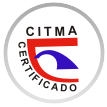Current problems of student auditorium management in higher schools
Keywords:
Student learning, Learning process, Student audience, ManagementAbstract
Effective student engagement is both crucial for academic success and national development in higher education. Apart from faculty competence which is represented by professional competence, pedagogical competencies, and subject content knowledge, the relationship between faculty and students is equally important. While these factors are slowly gaining recognition, there are still gaps in how a faculty member's approach to managing student engagement directly influences higher education institutional outcomes. The goal of this research is to analyze the interaction between faculty and management of the student audience within a higher educational setting. It is shown that to transform outcomes, effective institutional management and innovative pedagogical practices have critical roles to play. Key findings indicate that the continuous professional development of faculty, the infusion of contemporary learning technologies, and the introduction of feedback mechanisms are crucial to significantly enhancing learning outcomes. Also, the study has shown that institutional settings, if well managed, produce feedback mechanisms that streamline the entire educational work. Addressing these components would ensure that institutions of higher learning could play their role in fostering innovation and social development, and in training students to excel in an interdependent world.
Downloads
Published
How to Cite
Issue
Section
License
Copyright (c) 2024 Editorial "Universo Sur"

This work is licensed under a Creative Commons Attribution-NonCommercial-NoDerivatives 4.0 International License.
La editorial "Universo Sur", de la Universidad de Cienfuegos, publica el contenido de la Revista "Universidad y Sociedad" bajo una Licencia Creative Commons Atribución-NoComercial-SinDerivar 4.0 Internacional.
© Podrá reproducirse, de forma parcial o total, el contenido de esta publicación, siempre que se haga de forma literal y se mencione la fuente.










